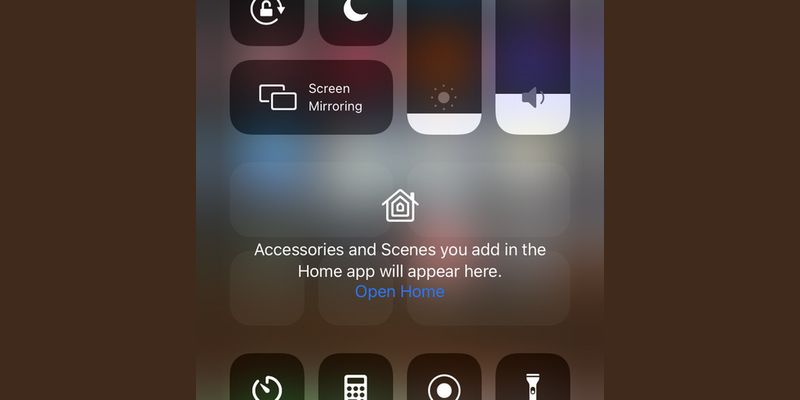
:max_bytes(150000):strip_icc()/control-center-ios11-5a0306c722fa3a003755347b.jpg)
To prevent that from happening, head into Settings > Face ID/Touch ID & Passcode. Any would-be thief can steal your iPhone and activate Airplane Mode, preventing you from locating it in Find My. If you are prone to leaving your iPhone around, this can pose a risk to your security. The Control Center on your iPhone is accessible even when it’s locked. Once you’ve done that, you can then immediately access the Control Center whenever you want by double-tapping or triple-tapping the back of the device.īesides the Control Center, you can also bind key iPhone functionalities such as the App Switcher, Notification Center, and Siri.

Then, select either Double Tap or Triple Tap and select Control Center. Go to Settings > Accessibility > Touch > Back Tap. Back Tap Control Centerĭid you know that you could bring up the iPhone’s Control Center by tapping the iPhone’s back twice or thrice? An accessibility setting dubbed Back Tap makes that more than possible. You never know what useful actions you may uncover. Performing the same gesture on the Brightness control provides you access to the Dark Mode, Night Shift, and True Tone toggles.ĭon’t forget to Haptic-press the smaller controls (the ones you can add or remove). For example, long-pressing the Wi-Fi control twice lets you switch between networks. Most controls within the iPhone’s Control Center support long-press Haptic Touch gestures. Then, use the handles next to each control within the Included Controls section to drag the controls in the order you want. To do that, head into Settings > Control Center. Rearrange Controlsīesides adding or removing controls, you can also choose to rearrange how the Control Center controls appear. You can also add controls by tapping the ‘+’ icons underneath the More Controls section. Underneath the Included Controls section, remove unwanted controls by tapping the ‘-’ icons next to them. Open the Settings app and tap Control Center. Aside from the more extensive set of options to the top of the Control Center, you can remove unwanted controls or add lots of new ones (Magnifier, Stopwatch, Sound Recognition, etc.) to access or manage the various functionalities on your iPhone. The Control Center on your iPhone is not limited to the set of controls that it features by default. The Control Center should be much more bearable to look at (and easier to navigate) from now onward. That should get rid of the Home controls instantly. Then, turn off the switch next to Show Home Controls. Scroll down and tap the option labeled Control Center. Start by opening the Settings app on your iPhone. You can, however, turn off the Home controls in the Control Center rather easily. That is just extra clutter if you don’t have any Home accessories or scenes to manage. Remove Home Screen Controlsīy default, your iPhone’s Control Center comes with multiple Home controls. Note: The following Control Center tips apply to iPhones running iOS 14 and later.


 0 kommentar(er)
0 kommentar(er)
